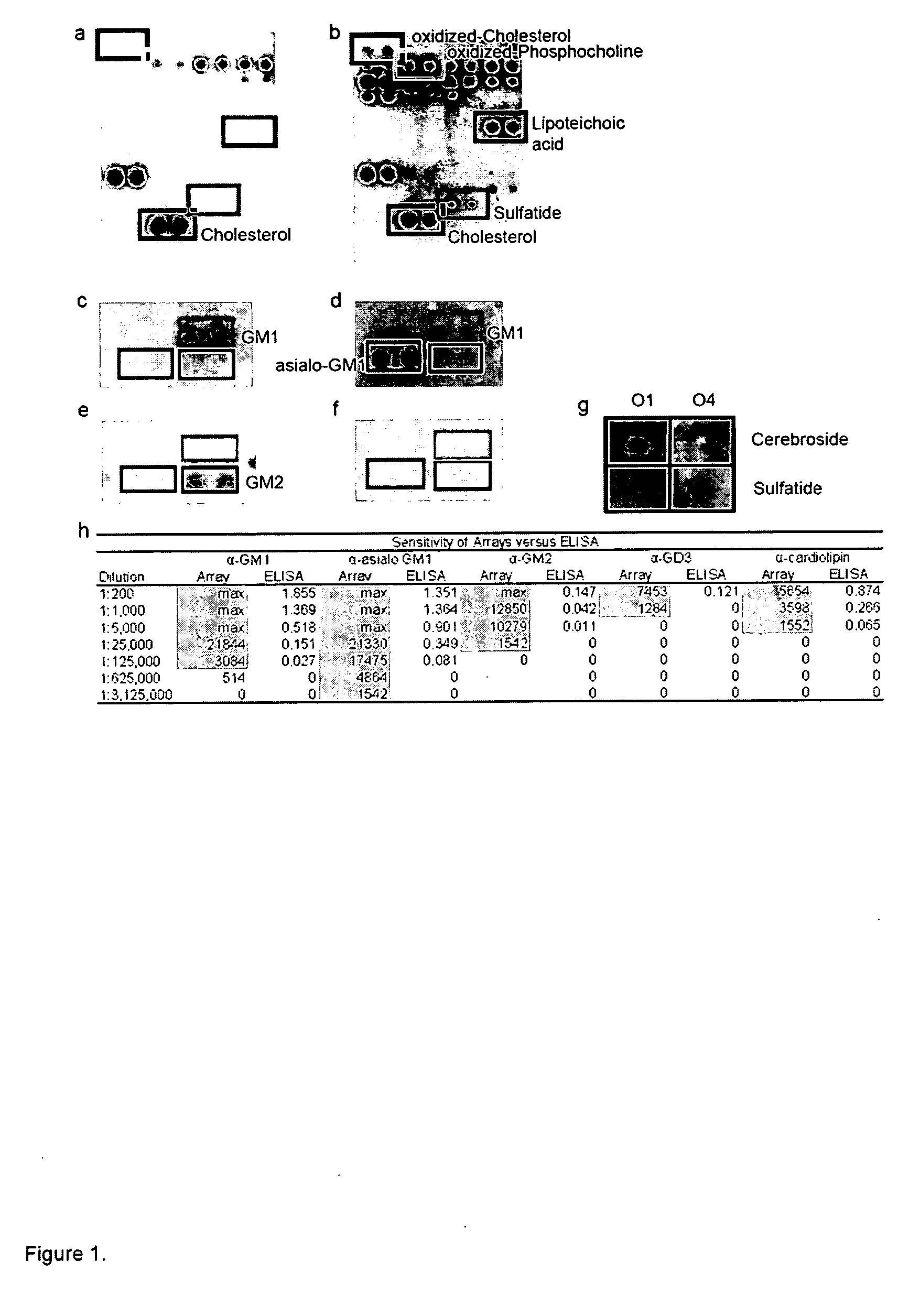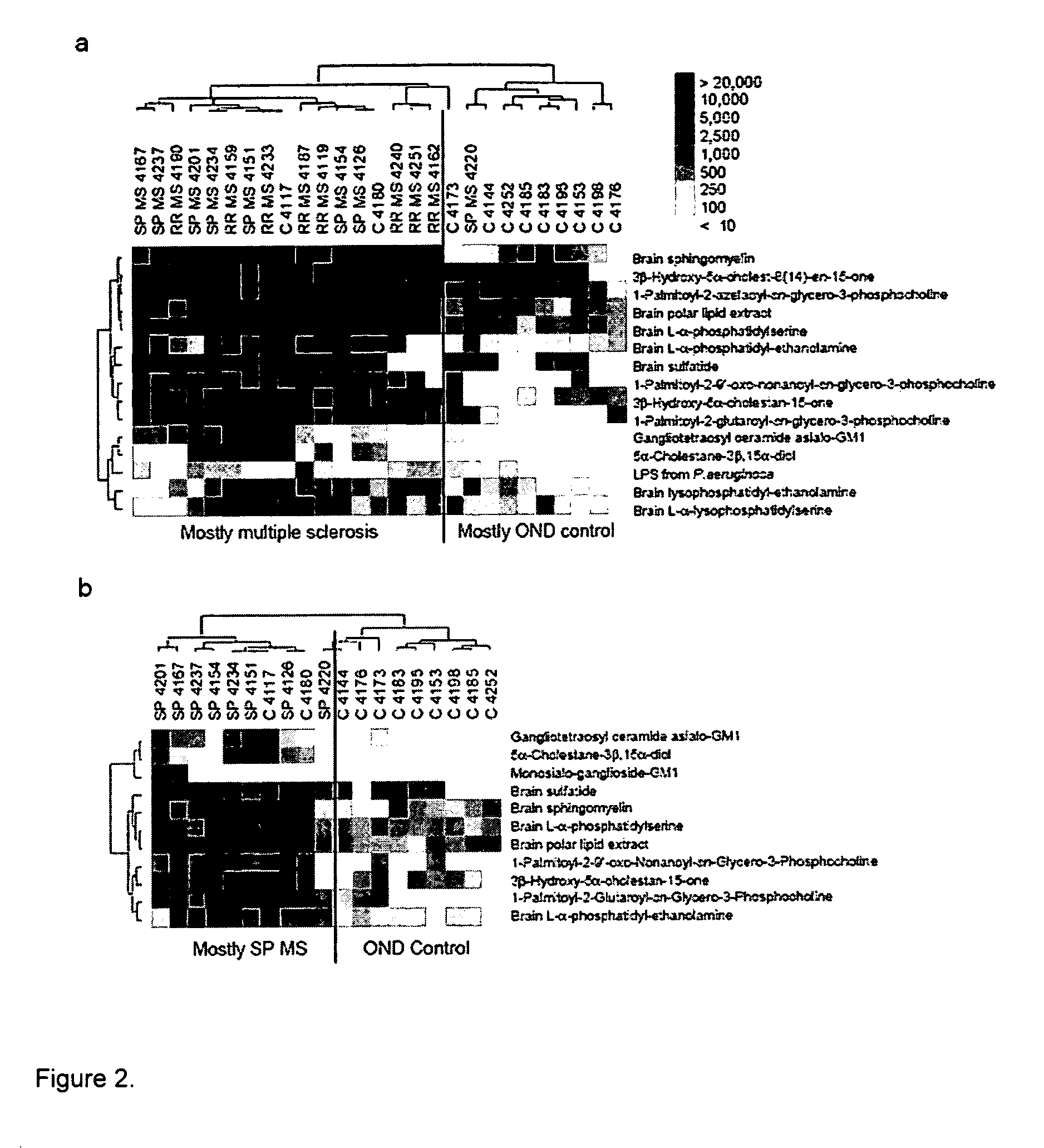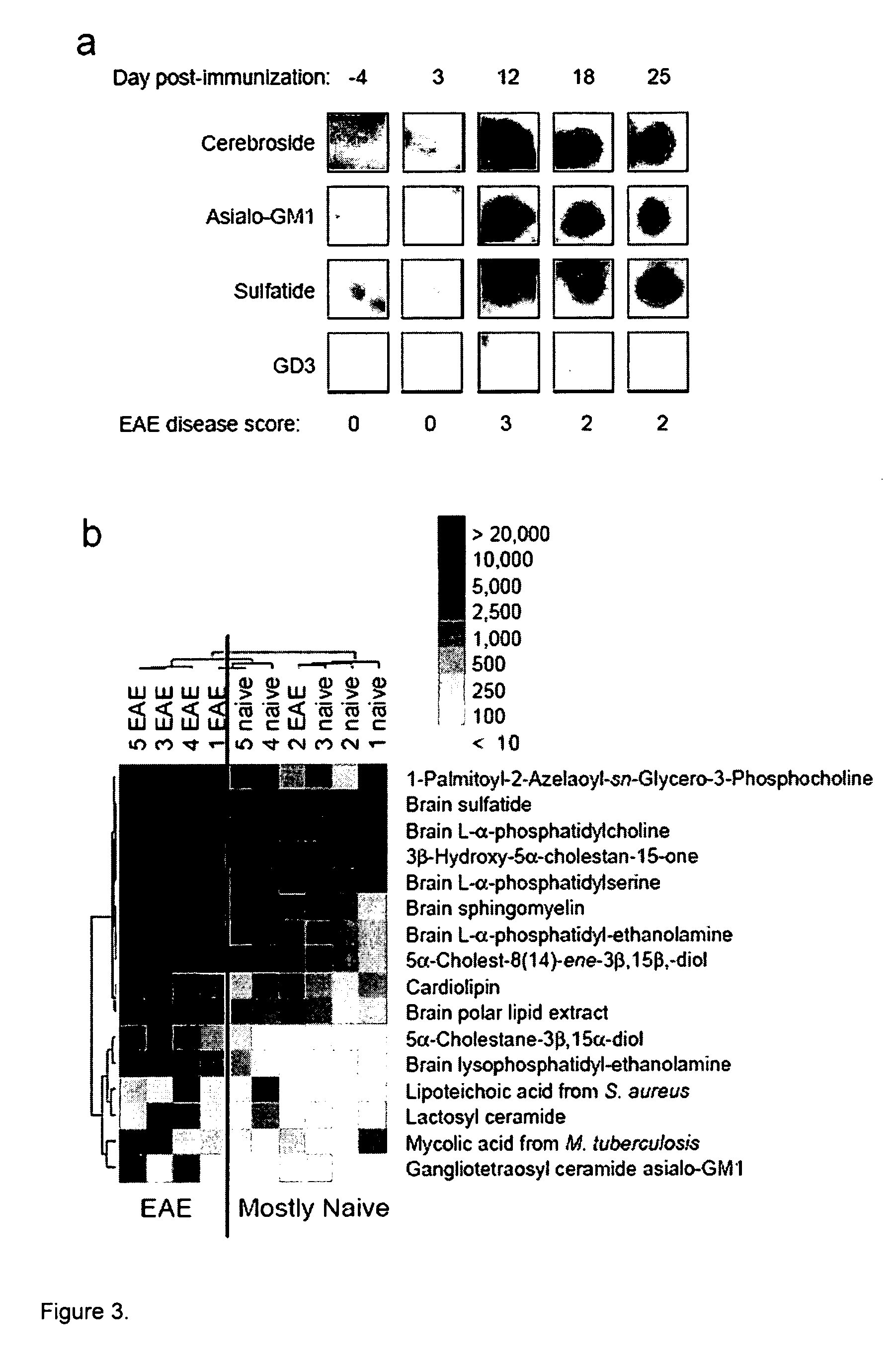Multiplex determination of lipid specific binding moieties
a lipid specific and binding moiete technology, applied in the field of multi-protein determination of lipid specific binding moieties, can solve the problems of inability to detect b and t cell responses, hinder existing methods to study insufficient study of immune responses to lipids, so as to prevent or decrease autoimmune responses, inhibit activation and function, and high throughput
- Summary
- Abstract
- Description
- Claims
- Application Information
AI Technical Summary
Benefits of technology
Problems solved by technology
Method used
Image
Examples
example 1
Testing for Anti-Lipid Antibodies with Lipid Microarrays
[0124] We developed lipid arrays for simple, large-scale analysis of autoantibodies present in biological fluids such as serum and cerebrospinal fluid (CSF).
[0125] Lipid Arrays.
[0126] Ordered arrays were created with 100 features containing duplicate spots of 50 distinct brain, myelin, and microbial lipids and glycolipids that represent potential targets of the autoimmune response in MS. The lipids printed included ganglioside, sulfatide, cerebroside, sphingomyelin, total brain lipid fractions and microbial lipids (see Table 1 for a list of lipids printed). Arrays were produced using a Camag ATS4 TLC sampler to draw the lipids from sealed vials and spray them under nitrogen gas in spacially-addressable locations on PVDF membranes afixed to microscope slides. Lipid arrays were incubated with diluted serum or CSF samples derived from patients with MS or mice with EAE, and chemiluminescence employed to detect autoantibody bindi...
example 2
Use of Anti-Lipid Antibodies for Diagnosis and Assessing Prognosis of Autoimmune Demyelinating Disease
[0143] MS Patients Possess Antibodies Against Multiple Myelin Lipids.
[0144] Lipid arrays were applied to profile anti-lipid antibody responses in CSF derived from 16 MS patients (8 relapsing remitting (RR); 8 secondary progressive (SP)) and 11 other neurological disease control patients. Lipid array reactivity was quantified and a statistical tool known as Significance Analysis of Microarrays (SAM; Tusher et al. (2001) Proc Natl Acad Sci USA 98, 5116-21) was applied to identify lipids with statistically-significant differences in array reactivity between MS and control samples. SAM-identified lipid features were ordered using a hierarchical cluster algorithm, and cluster results displayed as a heatmap using TreeView software (Eisen et al. (1998) Proc Natl Acad Sci USA 95, 14863-8). The MS patient samples clustered, and demonstrated strong and statistically increased reactivity to ...
example 3
Treatment of Multiple Sclerosis with Lipid Therapies
[0161] To narrow the list of lipids to study as tolerizing agents, we performed analysis of our lipid array datasets (FIG. 2a) using more stringent statistical cutoffs. We applied the Significance Analysis of Microarrays (SAM) algorithm to identify lipids with statistically-significant differences in our lipid array-determined anti-lipid antibody reactivity between 16 individuals with MS and 11 controls with other neurological diseases. SAM-identified anti-lipid antibody reactivities were ordered using a hierarchical cluster algorithm, and most individuals with MS clustered together based on similarities in their anti-lipid antibody reactivity profiles. Lipid “hits” with the lowest false discovery rate (false discovery rate (q)=0.039) that exhibited the greatest differences between the groups (SAM score of >3.0) were used for the clustering. This analysis reduced the “hit list”, of lipids to a group of six, including two related d...
PUM
| Property | Measurement | Unit |
|---|---|---|
| Length | aaaaa | aaaaa |
| Absorption cross section | aaaaa | aaaaa |
| Absorption cross section | aaaaa | aaaaa |
Abstract
Description
Claims
Application Information
 Login to View More
Login to View More - R&D
- Intellectual Property
- Life Sciences
- Materials
- Tech Scout
- Unparalleled Data Quality
- Higher Quality Content
- 60% Fewer Hallucinations
Browse by: Latest US Patents, China's latest patents, Technical Efficacy Thesaurus, Application Domain, Technology Topic, Popular Technical Reports.
© 2025 PatSnap. All rights reserved.Legal|Privacy policy|Modern Slavery Act Transparency Statement|Sitemap|About US| Contact US: help@patsnap.com



